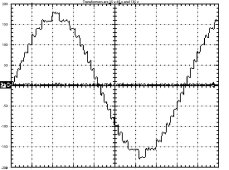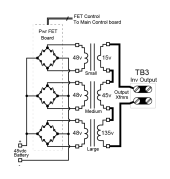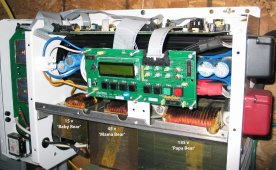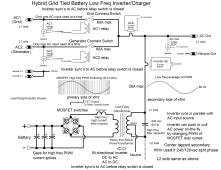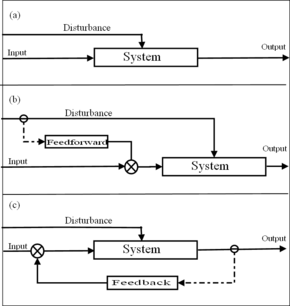I like to get a better understanding of your feedforward design. Are you using input current and input voltage parameters to regulate output voltage?
Yes that is how my feed forward correction works.
The basic idea is to measure the dc voltage coming into the inverter, and generate a sine wave of constant amplitude from that value of dc.
If you think about that, it can easily correct for slow changes in battery voltage, as well as sudden sags and surges due to fast load changes.
For instance, if 48 volt dc incoming power suddenly increases to 50 volts dc, you know that is a four percent measured increase.
So all you need to do is adjust downwards the digital drive amplitude that generates the inverter switching waveforms by the exact same 4%. and the ac output should remain constant. This can work equally well with ordinary PWM, or the stepped waveform used by Trace or a Warpverter.
The advantages are, that its very fast and easy to measure a dc input voltage. Measuring ac is a lot slower, because its constantly varying over each cycle anyway, and you need to either average at least a whole cycle or just measure at the exact peak, which can lead to errors if the ac waveform is at all noisy or distorted. With feedback, there are other problems, that the speed of correction must be kept slow. If you over correct, feedback can become unstable. So how much correction, and how fast the correction is applied, must be very carefully tuned. In other words classic PID loop tuning.
None of these problems apply to voltage feed forward. You just measure the incoming dc, and instantly change the output amplitude to correct.
The output correction may not be exact ( it may end up half a volt high or low) but it corrects very fast and can never become unstable.
If you always correct the amplitude right at the zero crossing, large sudden step changes in amplitude can be made without introducing any waveform distortion.
Now all this assumes that the inverter is perfect. That it has no internal resistance that the output voltage does not droop with increasing load power.
If an inverter has say 95% efficiency, the internal power loss will be proportionally quite small, and the output voltage regulation pretty good.
So all you really need is voltage feed forward and that will be good enough for most applications without anything else.
My own 5Kw 230v Warpverter drops about 2v per Kw with just voltage feed forward. So from no load to flat out the ac voltage goes up and down by 10 volts. The grid goes up and down by more than that here, and everything still works fine. My system can correct over a 2:1 dc input voltage range, which is a lot more than most other inverters. It will run straight from direct raw solar voltage if there is enough sun to do it.
To improve things further, current feed forward can be added. This works in the exact same way as voltage feed forward. The dc input current to the inverter is measured with a Hall sensor, and that is used to further slightly correct the output voltage droop with load. increase.
In fact, its possible to over correct, if you wanted to do that, so that the inverter output voltage actually rises with increasing load.
That might be useful if the inverter is remote from the load ! It could be tweaked to compensate for wiring voltage drop.
The inverter works fine without any of that, but if you need perfect output voltage regulation with extremely fast correction, this is the best way to achieve it.
I have never seen or heard of another inverter using feed forward voltage control, and I just cannot understand why nobody else uses it.
Its a very common technique in many other types of industrial control systems.
Even the engine management in your car uses feed forward to adjust ignition timing and fueling.
All the inputs from rpm, engine load, temperature, and other things are measured, and the correct value for spark and fuel set from a lookup table. There is no feedback !! Your inverter could run the same way by measuring just dc input voltage and current, and setting the output voltage appropriately. No feedback required.




